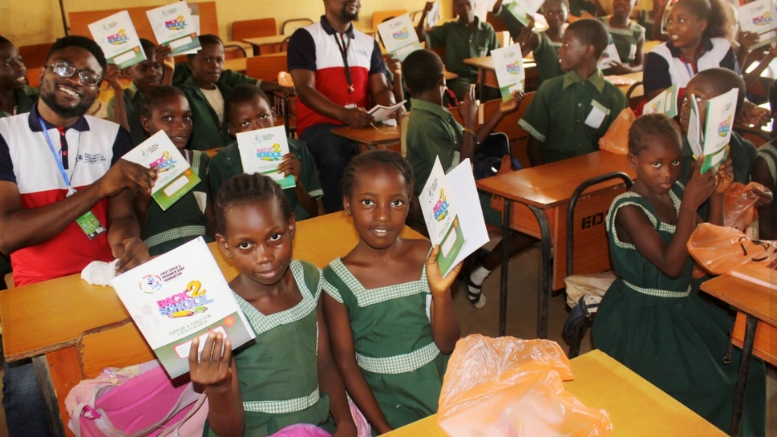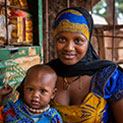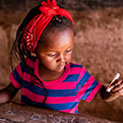Child Education

33%
Through this initiative, we aim to see increased literacy rates, higher school enrollment
The Child Education Project is a transformative initiative dedicated to breaking the barriers that limit children's access to quality education. In many parts of the world, especially in underprivileged communities, children face obstacles such as poverty, lack of infrastructure, and limited educational resources that prevent them from achieving their full potential. Education is not just a right; it is a powerful tool that equips children with the skills, knowledge, and values they need to shape their futures. This project is built on the belief that every child, regardless of their socio-economic background, deserves the opportunity to learn, grow, and thrive in a supportive and stimulating environment.
Objectives
At the heart of the Child Education Project is the objective to provide equal access to quality education for all children. The project seeks to create an environment where children can learn without the hindrance of external factors such as financial hardship, lack of resources, or discrimination. By focusing on both primary and secondary education, the initiative aims to lay a solid foundation for lifelong learning. This will involve supporting schools with adequate resources, including teaching materials, trained educators, and safe learning spaces. Furthermore, we aim to work closely with governments and local communities to advocate for policies that protect children's educational rights and remove barriers to their academic success.
Addressing Educational Inequality
One of the most pressing issues the Child Education Project seeks to address is the inequality in access to education. In many regions, children from marginalized communities are either out of school or receiving substandard education. Girls, in particular, are disproportionately affected by this gap, often being forced to stay at home to perform household duties or face societal pressures that limit their access to education. The project will specifically target these communities, implementing programs that encourage enrollment and retention in schools, particularly for girls. This includes awareness campaigns, scholarships, and mentorship programs that provide support to children and their families.Provision of Resources and Infrastructure
Access to education goes beyond just enrolling children in school; it requires a holistic approach that includes the provision of adequate resources and infrastructure. Many schools in underserved areas lack basic facilities such as classrooms, libraries, and sanitation, which directly affect children's ability to learn. The Child Education Project will focus on building and renovating schools to ensure a conducive learning environment. Additionally, the project will supply educational materials such as textbooks, writing materials, and technology like computers to support modern learning. The goal is to bridge the resource gap and ensure that children have access to the tools they need to succeed academically.
Empowering Teachers and Educators
A key component of the Child Education Project is the empowerment of teachers and educators, who play a crucial role in shaping the educational experiences of children. In many disadvantaged areas, teachers are often underpaid, untrained, or lack the necessary resources to effectively educate their students. The project will focus on improving the quality of education by offering teacher training programs that enhance their teaching skills, promote innovative teaching methods, and provide them with the necessary tools to create a dynamic classroom environment. By investing in educators, we can ensure that children receive the highest quality education, regardless of their geographic or socio-economic background.
Supporting Holistic Child Development
Education is not limited to academics alone; it also involves the overall development of a child’s emotional, physical, and intellectual well-being. The Child Education Project will integrate programs that focus on holistic child development, addressing the emotional and psychological needs of children. This includes offering counseling services, extracurricular activities, and health programs that cater to the physical and mental health of students. By fostering a supportive and nurturing environment, the project will help children develop confidence, self-esteem, and resilience, which are essential for both academic success and personal growth.
Promoting Digital Literacy and Innovation
As the world becomes increasingly digital, the importance of technology in education cannot be overstated. Many children in low-income areas lack access to digital tools and the internet, limiting their ability to engage with modern educational practices. The Child Education Project will prioritize digital literacy by providing children with access to computers, tablets, and internet connectivity. Additionally, we will develop programs that teach children essential digital skills, preparing them for the future workforce. By promoting innovation and technology in education, we aim to close the digital divide and equip children with the skills they need to compete in a global economy.
Community and Stakeholder Involvement
The success of the Child Education Project depends heavily on the involvement of local communities, governments, and stakeholders. Education is a collective responsibility, and the project will actively engage parents, community leaders, and organizations to create a culture that values and prioritizes education. This includes working with governments to implement supportive educational policies and with local businesses to provide resources or sponsor educational programs. By fostering strong partnerships, the project will build a sustainable framework that ensures long-term support for children's education, even beyond the project's lifespan.
Long-term Impact and Sustainability
The ultimate goal of the Child Education Project is to create lasting change in the lives of children and their communities. Education has the power to lift families out of poverty, reduce inequality, and promote sustainable development. Through this initiative, we aim to see increased literacy rates, higher school enrollment, and improved academic performance among children in underserved areas. Furthermore, we envision a ripple effect where educated children grow into empowered adults who contribute to the social and economic development of their communities. The Child Education Project is not just an intervention but a long-term investment in the future of children, ensuring that education remains a fundamental right for generations to come.









